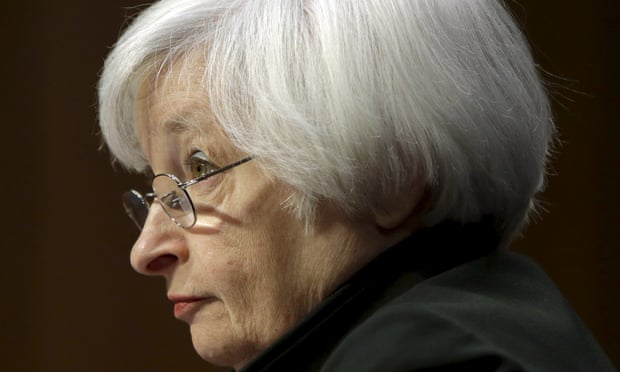
The Federal Reserve raised interest rates on Wednesday, ending an extraordinary period of government intervention in the financial markets that started at the height of the recession.
After holding its benchmark federal-funds rate near zero for seven years, the Fed increased rates a quarter-percentage point. The move signals the end of a monetary policy that began amid the worst financial crisis since the Great Depression.
The central bank signalled more increases to come “with gradual adjustments in the stance of monetary policy” and argued that “economic activity will continue to expand at a moderate pace and labor market indicators will continue to strengthen.”
Fed chair Janet Yellen will hold a news conference at 2.30pm ET on Wednesday to elaborate on the decision by the Federal Open Market Committee (FOMC).
Earlier this month, Yellen signaled to Congress’s joint economic committee that the US economy was now strong enough for the Fed to raise rates. The unemployment rate now stands at 5% and economic growth appeared stable, she said.
“I currently judge that US economic growth is likely to be sufficient over the next year or two to result in further improvement in the labor market,” she said. “Ongoing gains in the labor market, coupled with my judgment that longer-term inflation expectations remain reasonably well anchored, serve to bolster my confidence in a return of inflation to 2%.”
However some have expressed concern about the move. Inflation appears to be under control – mitigating an imminent need to slow the economy by raising rates. And there are still signs of weakness in the jobs market with historically high numbers of people no longer looking for work.The US has now added new jobs every month since October 2010. In November the economy added 211,000 jobs and has added Employers an average of 237,000 jobs a month over the past 12 months.
Ahead of the meeting Richard Trumka, president of the US’s largest union federation, AFL-CIO, urged the Fed to “avoid making a mistake” by raising interest rates.
“Too many working people are not feeling the economic recovery because of stagnant wages. In the months to come, the Fed should focus on the policy goal that real wages should rise with productivity. Working people deserve to lead better lives by sharing in the wealth we all create,” he said.
Stock markets around the world had risen on anticipation of the move, a clear signal that the US has shaken off the aftermath of the last recession. The zero rate interest rate policy was introduced by Yellen’s predecessor Ben Bernanke on 16 December 2008, exactly seven years ago. At the time global stock markets were in turmoil following the bursting of a mortgage-backed financial bubble that triggered a global recession.
Bernanke backed the zero rate move with a massive bond buying programme, spending billions to buy Treasury and mortgage backed bonds in a move aimed at keeping rates low and encouraging investment, a policy known as quantitative easing (QE). QE ended last October.
Gus Faucher, senior macroeconomist at PNC, said the policy had been a success. “If you compare the US to other industrial economies, the recovery in the US has been better,” he said. “You can see proof of that in Japan and Europe now where they have decided that QE is the way to go.”
No comments:
Post a Comment